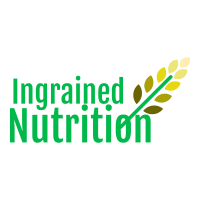Irritable bowel syndrome, or IBS, is a group of functional bowel disorders. It causes symptoms of bloating and distention, increased passing of wind, and altered bowel habits such as diarrhoea or constipation. For years, people were told this was “just they way they were,” because there is no cure. However, we can manage IBS – and the low FODMAP diet is one of the major tools in our kit for IBS.
To be diagnosed with IBS, you must have a combination of the symptoms for at least one day a week lasting for over 3 months. So, once you have a diagnosis, how do you use low FODMAP for Irritable Bowel Syndrome. Here’s all the details you need to work out if a FODMAP diet is right for you.
What does FODMAP mean?
The low FODMAP diet is based on research by Monash University. FODMAP is an acronym: it stands for Fermentable Oligosaccharides, Disaccharides, Monosaccharides and Polyols. These are short-chain carbohydrates or sugars found naturally in a lot of healthy foods such as vegetables, dairy, fruits, nuts, legumes and wheat.
When these sugars are digested two processes occur. First of all, they are osmotic, which means they draw water into the intestine. This can cause internal pressure, and potentially, diarrhoea. Secondly, FODMAPs are also fermented (gobbled up!) by the bacteria that live in our large bowel. This can create large amounts of gas and pressure within the gut. We feel this as bloating, distention and wind.
The majority of us can digest these sugars with no trouble. In fact, they are great food for our important gut bacteria, and a great source of fibre. There’s no reason to avoid them, for most people. However, for people irritable bowel syndrome, the nerve endings in the gut can be very sensitive to these processes. The FODMAP sugars cause discomfort and the uncomfortable symptoms of IBS.
What is low FODMAP for irritable bowel syndrome?
A low FODMAP diet is a 3-stage elimination diet. In the first stage, you will eliminate high FODMAP foods from your diet, for about 4-6 weeks. As Dietitians, we work with you to make sure your nutritional needs are still met while cutting out
Then comes the “challenge” or “re-introduction” phase. In this second stage, individual foods are introduced to your diet, to see which ones trigger your IBS symptoms. Each food is carefully tracked. This lets us identify which of the FODMAP sugars are not tolerated well by your digestive system, and in what amounts.

Finally, the third stage of the diet is crafting your long-term diet, once your IBS triggers have been identified. For example, it might be only Oligosaccharides that trigger your symptoms. Your body might be able to tolerate other FODMAP sugars well, so there’s no need to exclude those from your diet long-term. You may also be able to tolerate small amounts of FODMAP sugars, even if they do cause symptoms in larger quantities.
Can I follow a low FODMAP diet by myself?
Eliminating FODMAP sugars from your diet should always be done under the guidance of a FODMAP-trained dietitian. It’s a difficult process to do alone. It’s not always “logical” or obvious what foods contain FODMAPs. In the elimination phase, it’s important to exclude all FODMAPs so that triggers can be identified.
A low FODMAP diet is also not the only approach to managing IBS. A Dietitian can help work through other strategies first, which may be less disruptive to your everyday life.
Unfortunately, we also often see people who don’t follow how the diet is meant to work. They stay in the elimination phase for far too long. This unnecessarily limits their diet, and can impact on nutrition. Most people, after all, can introduce the majority of high FODMAP foods back into their diet long-term. It’s all about identifying specific triggers using the FODMAP diet process.
Further reading and reference on FODMAP for irritable bowel syndrome
The Monash University FODMAP resource is an excellent resource for understanding the low FODMAP diet. There are recipes, an app to help choose low FODMAP foods, and more. Check it out here.
We used the following article to help prepare this post: Rome Criteria and Diagnostic Approach for IBS. J Clin Med. 2017 Nov; 6(11): 99. Published online 2017 Oct 26. doi: 10.3390/jcm6110099
Get help with low FODMAP for irritable bowel syndrome
It’s a good idea to follow the low FODMAP diet with the guidance of a dietitian. We will help you complete the important phases of the diet and work out specifically which foods your IBS can tolerate. Find a Dietitian near you today to help guide your IBS journey.




